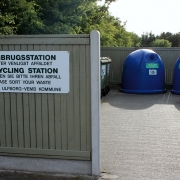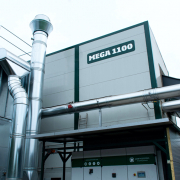Ljubljana’s Wastewater Treatment System to Be Updated with Exelys
In January 2020, Danish environmental group Krüger A/S announced plans for the installation of a new factory-built wastewater treatment plant in Slovenia’s capital Ljubljana.
The technology and capacity of the existing wastewater treatment plant in Ljubljana are no longer sufficient. The new facility will combine wastewater sludge treatment with the production of biogas for electricity and heating. Exemplary function fulfills the modern Billund Biorefinery in Denmark that has received worldwide plaudits for innovation and sustainability as it is much more than a wastewater treatment facility.
The plant in Danish Billund consists of three processing lines for wastewater, sorted municipal solids and residual industrial waste. The wastewater sludge passes the primary and partly a final settling, is collected in a buffer tank and led to a pulper, where it is mixed with shredded, sorted municipal solid. The mixture then reaches a biodigester whose biogas is collected and stored. Furthermore, the material from the biodigester is dewatered, caught in a silo, and will later be treated by thermal hydrolysis. Afterward, the residual sludge meets residual industrial waste that has passed a phase of hygienization, and then both enter another biodigester to produce biogas. The gas is stored and can be used for the production of electricity, heat or steam.
With additional technologies
The process is substituted by several advanced and trademarked technologies. The AnitaMox moving bed biofilm reactor converts ammonia to nitrogen using anammox bacteria without any additional carbon substrate. Precise control of nutrients is ensured by a Hydrotech Discfilter with the option of coagulant dosing. Pathogens in the sludge are killed by BioPasteur before digestion. The initial coordination of the municipality’s treatment plants and drainage systems is realized by Star Utility Solutions, a smart online system that measures processes online, switching over the plant’s treatment capacity, monitoring and optimizing the biomass feed and thus ensuring optimal treatment while minimizing energy and chemicals use.
The most interesting innovation of the Billund Bio-Refinery is Exelys, a trademarked and patented plant for thermal hydrolysis, whose installation is planned for Ljubljana. While heretofore processing equipment count on bath treating of material requiring large storage capacity, Exelys is a continuous process for pre-digested and dewatered substrates. According to a Veolia factsheet, the continuous thermal hydrolysis operates 24 hours a day with feed and removal levels that are adjustable in real-time, operating under controlled temperature (165°C), pressure (7.5 bar) and duration time (between 20 to 30 minutes) conditions. The system is controlled by a programmable logic controller that modulates the steam flow rate in line with the amount of sludge processed. The reactor volume is used in 100 percent of the time, can treat over three times the number of sludge solids compared to other plants, and results in lower steam demand per ton of dry solids. Its biogas production generates about three times the energy requirements of the plant itself – CO2 neutral –, with the surplus being exported to the grid.
Significantly more biogas
Additionally, the operators at Krüger are convinced that the Billund BioRefinery system is, in any case, the unique solution to combine known and new technologies. Therefore, Lars Henrik Andersen, Project Manager with Krüger A/S, is looking forward: “Now, we install Exelys at the wastewater treatment plant in Ljubljana to enable them to produce significantly more biogas in the digesters, and the gas will thus operate the existing sludge dryers.“ According to Veolia figures, the Exelys plant produces 30 to 50 percent more biogas, 25 to 35 percent less dried solids, an increased cake dryness by five percent, and finally enhanced treated sludge of class A. Time will show if the old Ljubljana plant will be so compatible with the new technology that it can reach these quotas.
(GR12020, Page 24, Photo: Veolia Water Technologies)







